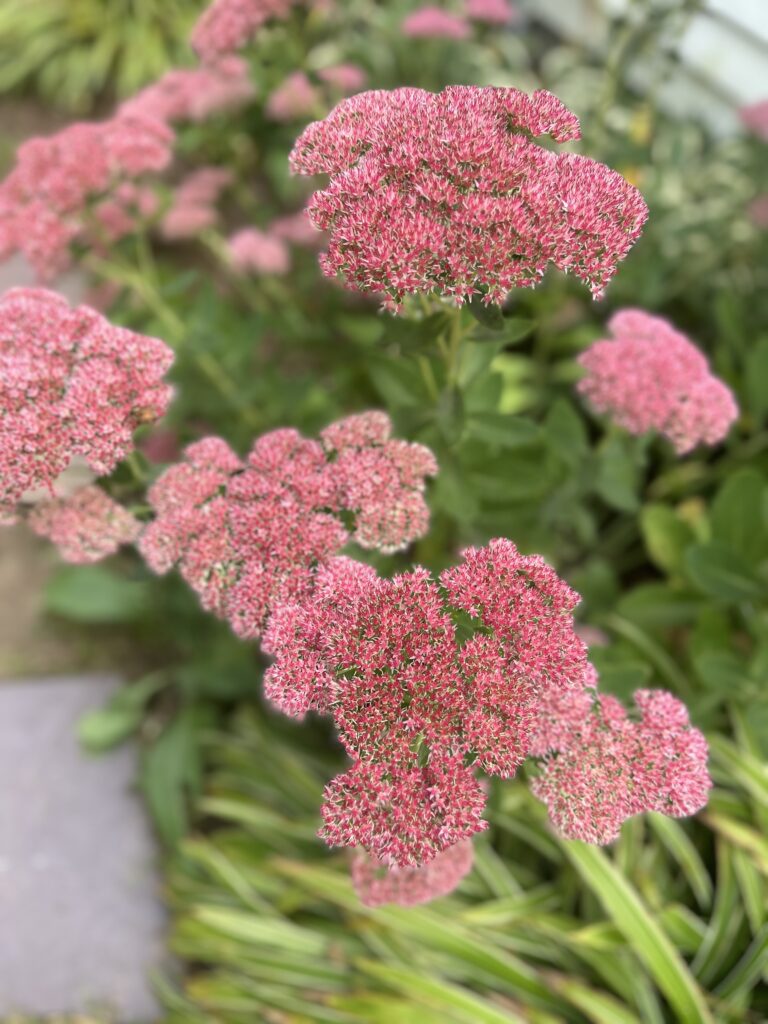Fall is the perfect time to renovate the lawn or seed a new one. This is the preferred time as weeds are less likely to be a problem. The soil is warmer than it is in the spring. Grass seed germinates sooner. Water seed 2-3 times a day until germination. (Note that the Acton Water District lifted all limitations on outdoor water usage effective October 1.)

Fertilize established lawns early in the month to support renewed cool-season growth. Grass plants are actively producing roots and take up more mineral nutrients than at any other time of year.
Deadhead daylilies, astilbes, ferns and other perennials that may have dried out in the extreme heat this summer. Keep up with weeding in the garden beds.
Divide perennials that are too large, have a dead spot in the middle or older plants that are not blooming well.
Many evergreens lose their older needles (the inner needles). This is normal and is most noticeable on white pine and arborvitae. Look at other trees to see if this is also occurring on them.
No longer apply fertilizer to your plants, so that they can harden off before frost.
Plant, divide, or move early blooming perennials. The general rule is to divide spring blooming perennials in the fall and fall bloomers in the spring. Divide Hosta (funkia), Hemerocallis (daylily), Dicentra (bleeding heart), Heuchera (coral bells), Pulmonaria (lungwort), and Paeonia (peony) now.
Late summer flowering shrubs may be pruned after blooming is complete. Transplant evergreens until the end of the month. Water these plants regularly until Thanksgiving so they have an opportunity to establish themselves.
Cut down and dispose of plants that are infected with powdery mildew. The fungus that causes powdery mildew overwinters on infected leaves. Disposing of those plants now can help lessen recurrence of the disease next year. Do not compost infected leaves.
Begin planning for fall bulb planting of spring flowering bulbs. The minor bulbs are among the first plants to bloom after our long winters. Shop now for spring bulbs to get the best selection.
Rabbits, squirrels, and chipmunks love tasty tulips. Use a sprinkle of blood meal or the repellent of your choice when planting, to deter them. For particular pesky critters, use chicken wire to fence the area. Daffodils, alliums, and hyacinths are deer and rodent resistant.
Dig up summer bulbs, tubers or rhizomes of plants such as gladioli, tuberous begonias, dahlias, caladiums and cannas. Allow them to dry, cut off the leaves and store in mesh bags in a dry, cool, airy space. Most unfinished basements will work well.
Bring houseplants back indoors as nighttime lows start to approach the mid-40’s. Before bringing houseplants inside, check carefully for pests. Aphids, whiteflies, and spider mites are all common pests that may hitchhike indoors where they will eventually become a problem. Adjust plants slowly to the new conditions. Avoid overwatering after the plants return indoors.
Sort through garden and lawn chemicals as well as fertilizers. Consider getting rid of old products or those that you will never use. Acton provides a Hazardous Waste Day for the safe disposal of these materials.
Have your garden and lawn soil tested this month to see if lime is needed. Go to soiltest.umass.edu for complete information on taking and sending a sample to the UMass Soil Testing Lab. If needed, limestone is best applied in fall.
Check for yellow jackets and bald-faced hornet nests before pruning or shearing. Strike the hedge with a long-handled rake and carefully watch for flying wasps. Ground wasps can also be a problem. Spray in the evening when wasps return to their hole.
Goldenrod is not responsible for the sniffling, sneezing, runny nose and watery eyes associated with hay fever and allergies. It is falsely accused because it flowers at the same time as many other annual weeds.
An easy way to get rid of a tree stump is to drill several deep holes into the surface of the stump using a half-inch drill bit. Fill the holes with a high nitrogen fertilizer and cover the stump with moist garden soil (the soil contains wood-decomposing bacteria and fungi). The stump will be converted to dark, rich soil in a couple of years.
Adjust timing on automated irrigation systems. As days get shorter and cooler weather arrives, turf will require less water. With regular rainfall, irrigation may not be needed.
Judy Dembsey is the chair of environmental education and a member of the board of the Acton Garden Club.
